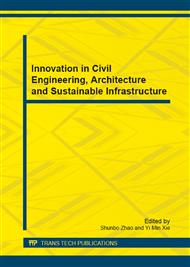p.808
p.814
p.818
p.823
p.826
p.833
p.838
p.844
p.848
Numerical Simulation by CGM for Moving Force Identification
Abstract:
The conjugate gradient method (CGM) is compared with the time domain method (TDM) in the paper. The numerical simulation results show that the CGM have higher identification accuracy and robust noise immunity as well as producing an acceptable solution to ill-posed problems to some extent when they are used to identify the moving force. When the bending moment responses are used to identify the time-varying loads, the identification accuracy is more obviously improved than the TDM, which is more suitable for the time-varying loads identification.
Info:
Periodical:
Pages:
826-829
Citation:
Online since:
November 2012
Authors:
Price:
Сopyright:
© 2012 Trans Tech Publications Ltd. All Rights Reserved
Share:
Citation:


